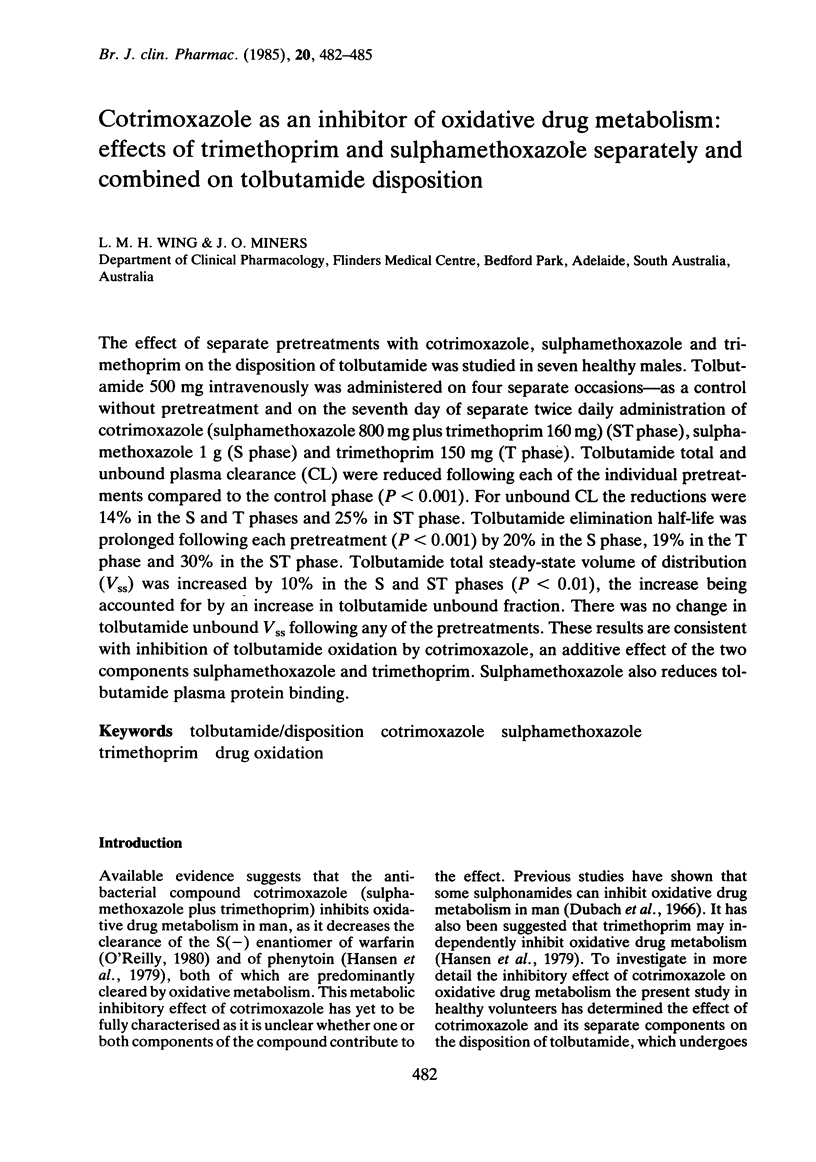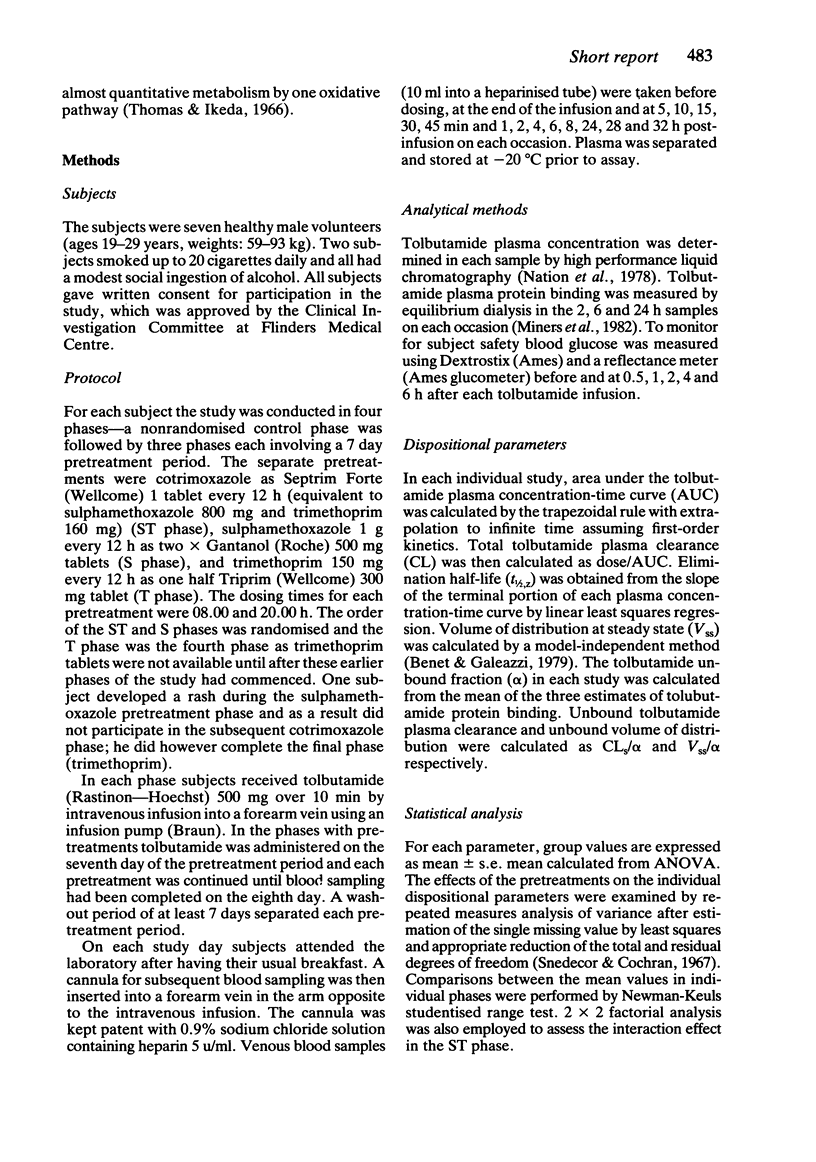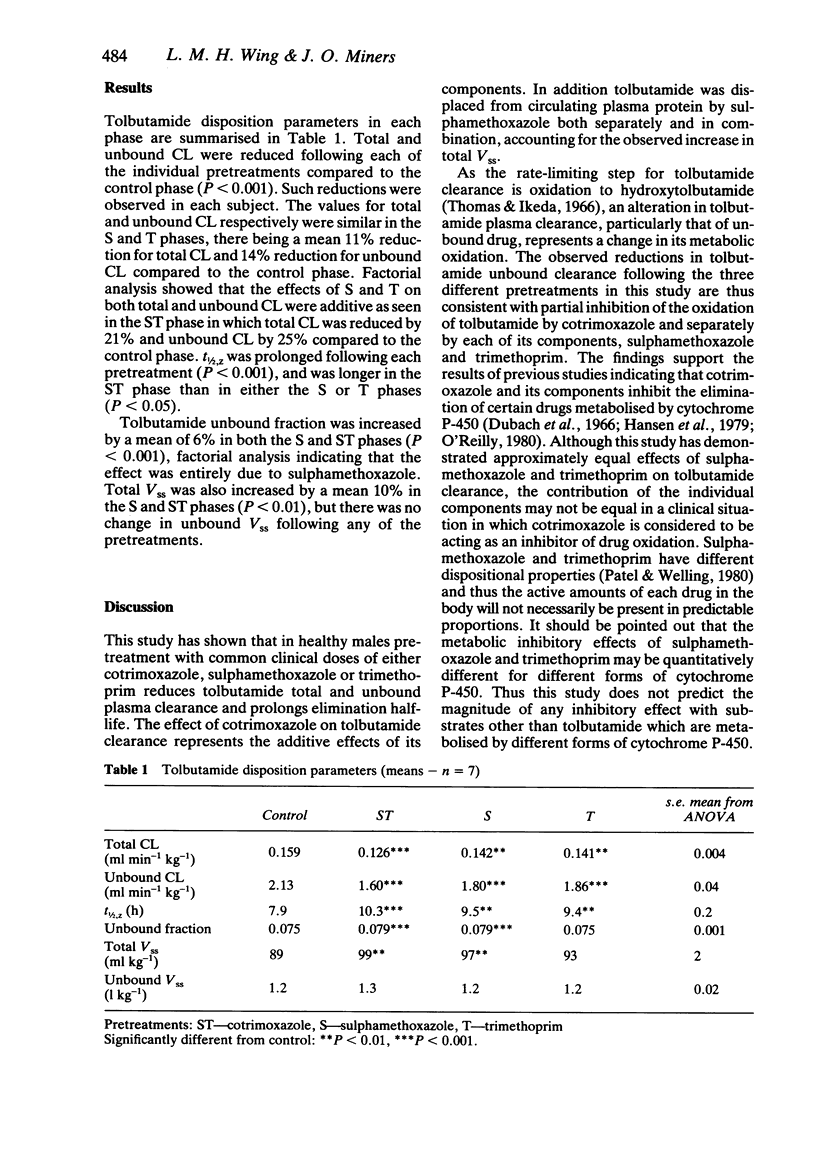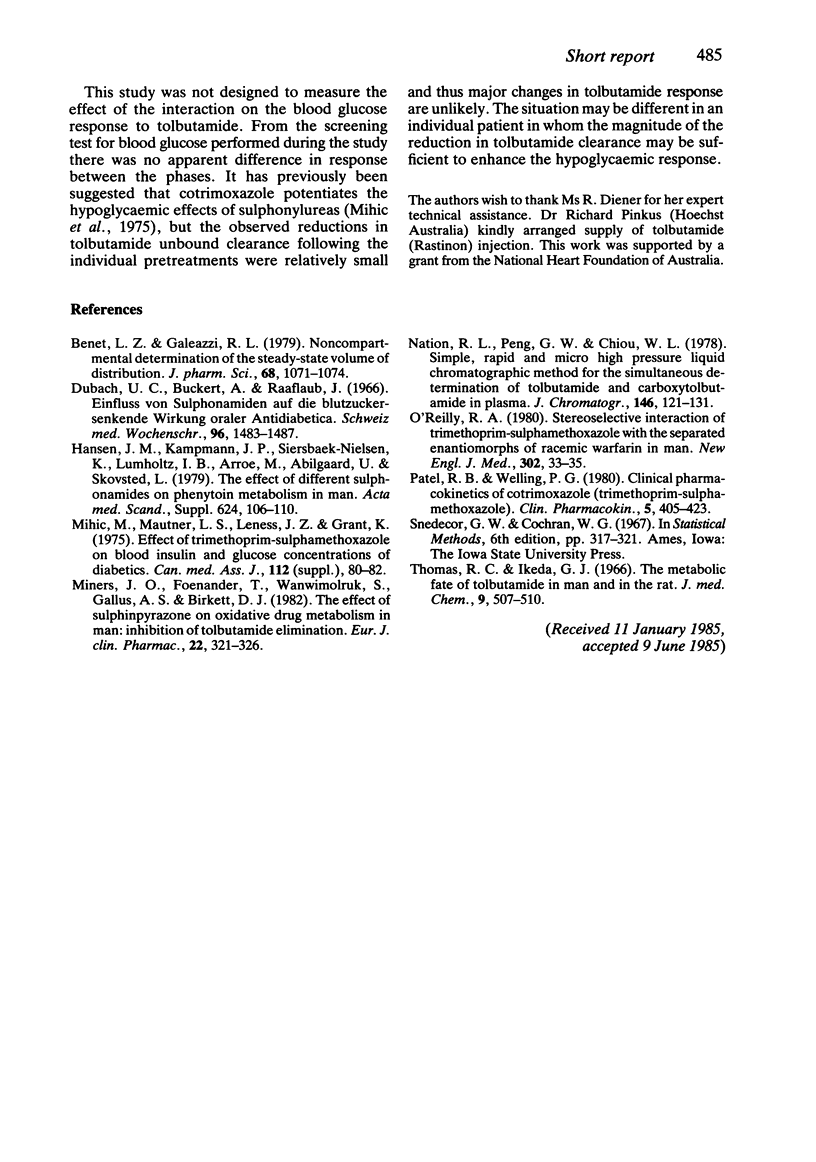Abstract
The effect of separate pretreatments with cotrimoxazole, sulphamethoxazole and trimethoprim on the disposition of tolbutamide was studied in seven healthy males. Tolbutamide 500 mg intravenously was administered on four separate occasions--as a control without pretreatment and on the seventh day of separate twice daily administration of cotrimoxazole (sulphamethoxazole 800 mg plus trimethoprim 160 mg) (ST phase), sulphamethoxazole 1 g (S phase) and trimethoprim 150 mg (T phase). Tolbutamide total and unbound plasma clearance (CL) were reduced following each of the individual pretreatments compared to the control phase (P less than 0.001). For unbound CL the reductions were 14% in the S and T phases and 25% in ST phase. Tolbutamide elimination half-life was prolonged following each pretreatment (P less than 0.001) by 20% in the S phase, 19% in the T phase and 30% in the ST phase. Tolbutamide total steady-state volume of distribution (VSS) was increased by 10% in the S and ST phases (P less than 0.01), the increase being accounted for by an increase in tolbutamide unbound fraction. There was no change in tolbutamide unbound VSS following any of the pretreatments. These results are consistent with inhibition of tolbutamide oxidation by cotrimoxazole, an additive effect of the two components sulphamethoxazole and trimethoprim. Sulphamethoxazole also reduces tolbutamide plasma protein binding.
Full text
PDF



Selected References
These references are in PubMed. This may not be the complete list of references from this article.
- Benet L. Z., Galeazzi R. L. Noncompartmental determination of the steady-state volume of distribution. J Pharm Sci. 1979 Aug;68(8):1071–1074. doi: 10.1002/jps.2600680845. [DOI] [PubMed] [Google Scholar]
- Hansen J. M., Kampmann J. P., Siersbaek-Nielsen K., Lumholtz I. B., Arrøe M., Abildgaard U., Skovsted L. The effect of different sulfonamides on phenytoin metabolism in man. Acta Med Scand Suppl. 1979;624:106–110. doi: 10.1111/j.0954-6820.1979.tb00729.x. [DOI] [PubMed] [Google Scholar]
- Mihic M., Mautner L. S., Feness J. Z., Grant K. Effect of trimethoprim-sulfamethoxazole on blood insulin and glucose concentrations of diabetics. Can Med Assoc J. 1975 Jun 14;112(13 Spec No):80–82. [PMC free article] [PubMed] [Google Scholar]
- Miners J. O., Foenander T., Wanwimolruk S., Gallus A. S., Birkett D. J. The effect of sulphinpyrazone on oxidative drug metabolism in man: inhibition of tolbutamide elimination. Eur J Clin Pharmacol. 1982;22(4):321–326. doi: 10.1007/BF00548400. [DOI] [PubMed] [Google Scholar]
- Nation R. L., Peng G. W., Chiou W. L. Simple, rapid and micro high-pressure liquid chromatographic method for the simultaneous determination of tolbutamide and carboxy tolbutamide in plasma. J Chromatogr. 1978 Jul 1;146(1):121–131. doi: 10.1016/s0378-4347(00)81296-7. [DOI] [PubMed] [Google Scholar]
- O'Reilly R. A. Stereoselective interaction of trimethoprim-sulfamethoxazole with the separated enantiomorphs of racemic warfarin in man. N Engl J Med. 1980 Jan 3;302(1):33–35. doi: 10.1056/NEJM198001033020106. [DOI] [PubMed] [Google Scholar]
- Patel R. B., Welling P. G. Clinical pharmacokinetics of co-trimoxazole (trimethoprim-sulphamethoxazole). Clin Pharmacokinet. 1980 Sep-Oct;5(5):405–423. doi: 10.2165/00003088-198005050-00001. [DOI] [PubMed] [Google Scholar]
- Thomas R. C., Ikeda G. J. The metabolic fate of tolbutamide in man and in the rat. J Med Chem. 1966 Jul;9(4):507–510. doi: 10.1021/jm00322a014. [DOI] [PubMed] [Google Scholar]


